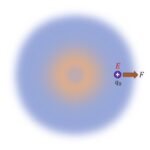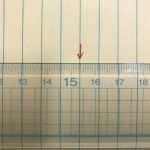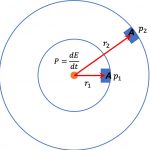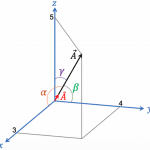Last Updated on 2025-08-30 by BallPen
구면좌표계와 관련된 다양한 개념들을 상세히 알아보겠습니다.
구면좌표계(spherical coordinate system)란 직교좌표계의 하나로써 3차원 공간을 표현하는 방법중의 하나입니다.
이번 글에서는 구면좌표계에서의 단위벡터, 위치, 속도, 가속도, 길이요소, 면적요소, 부피요소, 델 연산자, 기울기, 발산, 회전 등에 대해 알아보겠습니다.
이 글은 구면좌표계를 최대한 상세하게 설명하고자 작성한 거에요. 혹시 구면좌표계의 관련 공식을 빠르게 알고 싶다면 위키백과의 구면좌표계를 참고하세요.
또한 본 글에서의 내용을 전부 암기할 필요는 없어요. 보통 필요한 관계식만 뽑아서 사용하는데요.
그렇더라도 구면좌표계를 처음 공부하는 분이라면 적어도 한번은 전체적으로 읽어보시고 필기하면서 공부하면 큰 도움이 될거에요.
아래는 이번 글의 목차입니다.
Contents
1. 구면좌표계 위치벡터와 단위벡터
아래 [그림 1]은 구면좌표계의 개념을 설명하기 위한 그림입니다.
1-1. 위치
![[그림 1] 구면좌표계](https://ballpen.blog/wp-content/uploads/2023/10/Picture1-4-1024x1004.jpg)
직각좌표계에서는 어느 입자가 놓인 곳의 위치 좌표를 (x, y, z)로 표현합니다.
이와 달리 구면좌표계에서는 입자의 좌표를 (r, \theta, \phi)로 표현해요. 이 세개의 정보만 있으면 3차원 공간의 어느 지점이던 그 위치를 표현할 수 있어요.
[그림 1]과 같이 r은 원점으로부터 입자가 있는 곳까지의 거리이고, \theta는 z축을 기준으로 경도방향으로 돌아간 각도이며, \phi는 x축을 기준으로 위도 방향으로 돌아간 각도를 의미합니다.
1-2. 위치벡터
직각좌표계는 세개의 단위벡터 \hat{x}, \hat{y}, \hat{z}를 이용해 위치벡터를 \vec {r} = x \hat {x} + y \hat{y} + z\hat{z}로 표현합니다.
그런데 구면좌표계는 위치벡터를 아래 식 (1-1)과 같이 표현해요.
\tag{1-1}
\vec r = r \hat{r}[그림 1]을 보면 r은 원점으로부터 M점까지의 거리이고, \hat{r}은 위치벡터의 방향을 나타내는 단위벡터에요.
그런데 [그림 1]을 보면 단위벡터가 \hat{r}뿐만 아니라 \hat{\theta}, \hat{\phi}도 있다는 것을 알 수 있어요.
그럼 다른 단위벡터는 (1)식에서 왜 활용되지 않았나 하고 궁금할 수 있는데요. 그 이유는 단위벡터 \hat{r}속에 다른 방향 정보가 함께 녹아 있는 것으로 보면 됩니다.
긴 이야기를 시작하기 전에 일단 용어정리를 먼저 할께요.
\hat{r}은 중심에서 나가는 단위벡터이므로 지름방향단위벡터라고 부릅니다. 그리고 \hat{\phi}는 위도의 접선방향을 향하며 \phi방향 단위벡터라고 해요. 마지막으로 \hat{\theta}는 경도의 접선방향을 향하며 \theta방향 단위벡터라고 부르면 됩니다.
1-3. 단위벡터
직교좌표계의 가장 기본은 직각좌표계이죠.
따라서 구면좌표계와 직각좌표계 사이의 변환관계를 알고 있어야 언제든지 구면좌표계를 직각좌표계로 바꿀 수 있을 거에요. 물론 그 반대도 가능하죠.
이제부터 구면좌표계와 직각좌표계 사이의 단위벡터 관계를 알아봐요.
![[그림 2] 구면좌표계 단위벡터 <span class="katex-eq" data-katex-display="false">\hat r</span>, <span class="katex-eq" data-katex-display="false">\hat \theta</span>, <span class="katex-eq" data-katex-display="false">\hat \phi</span>](https://ballpen.blog/wp-content/uploads/2023/10/Picture2-1-1024x1004.jpg)
위 [그림 2]는 [그림 1]을 조금 변형한건데요. M점의 위치 (r, \theta, \phi)가 주어져 있을 때 이를 직각좌표계의 위치 (x, y, z)로 바꾸고자 한다면 어떻게 해야 할까요?
\tag{1-2}
(r,~ \theta,~ \phi) \rightarrow(x,~y,~z)그림을 보면서 상상해 보세요.
[그림 2]에서 r\sin \theta는 위쪽에 그려진 보라색 실선입니다. 그 실선을 평행이동해서 아래쪽으로 그대로 내리면 원점과 연결된 보라색 선이 될거에요. 그 선의 길이에 \cos \phi를 취하면 x좌표를 구할수 있겠어요.
이번에는 원점과 연결된 보라색 선에 \sin \phi를 취하면 y 좌표를 구할 수 있을거에요.
그럼 z좌표는 어떻게 구할 수 있나요? 네 맞아요. r \cos \theta를 구하면 됩니다.
이를 정리하면 (r, \theta, \phi) 정보를 이용해 (x, y, z)를 구할 수 있습니다.
정리하면 아래와 같아요.
\tag{1-3}
\begin{aligned}
&x= r \sin \theta \cos \phi\\
&y = r \sin \theta \sin \phi\\
&z = r \cos \theta
\end{aligned}반대로 (x, y, z)로부터 (r, \theta, \phi)를 구하고자 한다면 다음의 관계를 이용하면 됩니다.
\tag{1-4}
\begin{aligned}
&r = \sqrt{x^2 + y^2 + z^2}\\
&\theta = \cos^{-1} {z \over r}\\
&\phi = \tan^{-1} {y \over x}
\end{aligned}(1-4)식의 첫번째는 피타고라스 정리이며, 두번째는 (1-3)식의 세번째 식에서 도출된 것입니다. 그리고 세번째는 (1-3)식의 두번째 식을 첫번째 식으로 나누면 구할 수 있어요.
[단위벡터 유도]
이번에는 구면좌표계의 단위벡터 \hat{r}, \hat{\theta}, \hat{\phi}를 직각좌표계의 단위벡터 \hat{x}, \hat{y}, \hat{z}로 표현해봐요.
다시 한번 더 말씀드리면 이런 변환관계는 좌표계끼리 서로 변환할 필요가 있을 때 언제든지 적용하기 위함이라는 것을 기억하세요.
먼저 구면좌표계의 위치벡터인 (1-1)식을 단위벡터 \hat r에 대해 표현한 후, (1-3)식을적용하면 다음과 같아요.
\tag{1-5}
\begin{aligned}
\hat r = {{\vec r}\over{r}} &= {{x\hat x + y \hat y + \hat z}\over{r}}\\
&={{\cancel{r}\sin \theta \cos \phi \hat x + \cancel{r}\sin \theta \sin \phi \hat y + \cancel {r} \cos \theta \hat z}\over{\cancel r}}\\
&=\sin \theta \cos \phi \hat x + \sin \theta \sin \phi \hat y + \cos \theta \hat z
\end{aligned}이번에는 \hat \theta를 구해볼텐데요. 이것은 머리속에서 상상을 좀 하셔야 합니다.
[그림 2]에서 \theta가 현재 그림보다 \pi \over 2만큼 더 회전하여 \theta + {\pi \over 2}가 되었다고 상상해 보세요. 그러면 현재 그림의 \hat r 방향이 \hat \theta의 방향과 같아질거에요. 대신 \phi는 고정되어 있다는 전제입니다.
이와 같이 \hat \theta는 \hat r을 \theta 방향으로 \pi \over 2만큼 더 회전시키면 구할 수 있는데요. (1-5)식의 단위벡터 \hat r에 이 관계를 대입하면 다음과 같아요.
\tag{1-6}
\begin{aligned}
\hat \theta &= \hat r~~[\theta \rightarrow \theta + {\pi \over 2}, \phi]\\
&=\sin (\theta + {\pi \over 2}) \cos \phi \hat x + \sin (\theta + {\pi \over 2}) \sin \phi \hat y + \cos (\theta + {\pi \over 2}) \hat z\\
&=\cos \theta \cos \phi \hat x + \cos \theta \sin \phi \hat y -\sin \theta \hat z
\end{aligned}마지막으로 \hat \phi도 구해봐요. 한번 더 상상을 해보세요. [그림 2]에서 \hat r 이 있잖아요. 이때 만일 \theta를 {{\pi}\over{2}}로 고정하고, \phi를 \phi + {{\phi}\over{2}}만큼 회전하면 \hat r이 \hat \phi과 같아지게 될까요?
네 같은 방향을 향하게 됩니다. 이 관계를 식으로 정리하면 다음과 같아요.
\tag{1-7}
\begin{aligned}
\hat \phi &= \hat r~~[\theta = {{\pi}\over{2}},~ \phi \rightarrow \phi + {\pi \over 2}]\\
&=\sin {\pi \over{2}} \cos(\phi + {\pi \over 2}) \hat x + \sin{\pi \over 2} \sin(\phi + {\phi \over 2})\hat y + \cos{\pi \over 2} \hat z\\
&=-\sin \phi \hat x + \cos \phi \hat y
\end{aligned}최종적으로 (1-5), (1-6), (1-7)식을 종합 정리하면 구면좌표계의 단위벡터는 다음과 같습니다.
\tag{1-8}
\begin{aligned}
& \hat r =\sin \theta \cos \phi \hat x + \sin \theta \sin \phi \hat y + \cos \theta \hat z\\
& \hat \theta =\cos \theta \cos \phi \hat x + \cos \theta \sin \phi \hat y -\sin \theta \hat z\\
& \hat \phi = -\sin \phi \hat x + \cos \phi \hat y
\end{aligned}2. 구면좌표계 속도, 가속도
구면좌표계에서 어느 입자가 있는 곳의 위치벡터는 (1-1)식으로 표현된다고 말씀드렸어요. 그렇다면 구면좌표계에서 그 입자의 속도와 가속도는 어떻게 표현될까요?
이를 구하기 위해서는 우선 (1-8)식에 주어진 구면좌표계 단위벡터를 시간으로 미분하는 것부터 알아야 합니다. 그래야 속도, 가속도 표현을 알아볼 수 있어요.
2-1. 단위벡터의 미분
구면좌표계의 단위벡터는 (1-8)식처럼 총 3개가 있어요. 각각을 시간으로 미분하면 되는데요.
간혹 단위벡터의 크기는 1이고 방향이 각 축의 방향으로 고정되어 있으니 시간으로 미분하면 0이 될것이라고 생각될 수 있어요. 그렇지만 그것은 직각좌표계에서만 맞는 이야기에요. 구면좌표계에서는 0이 아닙니다.
그 이유는 직각좌표계의 단위벡터는 크기가 1이고 방향이 각 축에 고정되어 시간으로 미분하면 0인 것이 맞아요. 하지만 [그림 2]에서 볼수 있는것처럼 구면좌표계의 단위벡터 (r, \theta, \phi)는 축에 고정된것이 아닙니다.
입자가 있는 위치에 따라 달라져요. 그래서 구면좌표계에서의 단위벡터를 시간으로 미분하면 0이 아닌 것이죠.
그러면 \hat r부터 시간으로 미분해보겠습니다. 이때 미분을 분수 형태로 써도 좋겠지만 간결하게 표현하기 위해 함수 위에 점을 찍어 표기하겠습니다. 예를 들어 \theta를 시간 t로 미분한 {{d\theta} \over {dt}}를 \dot \theta 처럼요. 그리고 곱의 미분법을 적용합니다.
\tag{2-1}
\begin{aligned}
{{{d} \hat r}\over{{d} t}} &= {{d}\over{{d}t}}(\sin \theta \cos \phi \hat x + \sin \theta \sin \phi \hat y + \cos \theta \hat z)\\
&=\cos \theta {{d \theta}\over {dt}}\cos \phi \hat x - \sin \theta \sin \phi {{d \phi}\over{dt}}{\hat x} + \sin \theta \cos \phi {\cancel{{d \hat x}\over{dt}}}\\
&~~~~~~~+\cos {{d \theta}\over{dt}} \sin \phi \hat y + \sin \theta\cos \phi{{d \phi}\over{dt}}\hat y + \sin \theta \sin \phi {\cancel{{d \hat y}\over{dt}}}\\
&~~~~~~~~~~~~~~-\sin \theta {{d \theta}\over{dt}} \hat z + \cos \theta {\cancel{{d \hat z}\over{dt}}}\\
&= \cos \theta\dot \theta\cos \phi \hat x - \sin \theta \sin \phi \dot \phi \hat x + \cos \theta \dot \theta \sin \phi \hat y + \sin \theta \cos \phi \dot \phi \hat y - \sin \theta \dot \theta \hat z\\
&=\dot \theta (\color{blue}{\cos \theta \cos \phi \hat x + \cos \theta \sin \phi \hat y-\sin \theta \hat z}\color{black} ) + \dot \phi \sin \theta(\color{blue}-\sin \phi \hat x + \cos \phi \hat y \color{black})\\
&=\dot \theta \color{blue}\hat \theta \color{black}+\dot \phi \sin \theta \color{blue}\hat \phi
\end{aligned}위 식에서 사선으로 그어진 항은 직각좌표계 단위벡터를 시간으로 미분한 것이기 때문에 그것은 0이 됩니다.
신기하게도 \hat r을 시간으로 미분했더니 단위벡터 \hat \theta와 \hat \phi의 결합으로 주어지는 것을 알 수 있어요.
이번에는 \hat \theta를 시간으로 미분해보겠습니다.
\tag{2-2}
\begin{aligned}
{{d \hat \theta}\over{dt}} &= {d \over{dt}}(\cos \theta \cos \phi \hat x +\cos \theta \sin \phi \hat y - \sin \theta \hat z)\\
&=-\sin \theta {{d \theta}\over{dt}} \cos \phi \hat x - \cos \theta \sin \phi {{d \phi}\over{dt}}\hat x + \cos \theta \cos \phi {\cancel{{d \hat x}\over{dt}}}\\
&~~~~~~~-\sin \theta {{d \theta}\over{dt}}\sin \phi \hat y + \cos \theta \cos \phi{{d \phi}\over{dt}}\hat y + \cos \theta \sin \phi {\cancel{{d \hat y}\over{dt}}}\\
&~~~~~~~~~~~~~~-\cos \theta {{d \theta}\over{dt}}\hat z - \sin \theta {\cancel{{d \hat z}\over{dt}}}\\
&=- \sin \theta \dot \theta \cos \phi \hat x-\cos \theta \sin \phi \dot \phi\hat x - \sin \theta \dot \theta \sin \phi \hat y+\cos \theta \cos \phi \dot \phi\hat y-\cos \theta \dot \theta \hat z\\
&=\dot \theta (\color{blue}-\sin \theta \cos \phi \hat x-\sin \theta \sin \phi\hat y-\cos \theta \hat z \color{black})+\dot \phi\cos \theta (\color{blue}-\sin \phi \hat x+\cos \phi \hat y \color{black})\\
&=- \dot \theta \color{blue} \hat r \color{black}+ \dot \phi \cos \theta \color{blue}\hat \phi
\end{aligned}그 결과 단위벡터 \hat \theta을 시간으로 미분했더니 단위벡터 \hat r과 \hat \phi의 결합으로 주어지는 것을 알 수 있어요.
마지막으로 이번에는 \hat \phi를 시간으로 미분할께요.
\tag{2-3}
\begin{aligned}
{{d \hat \phi}\over{dt}} &= {{d}\over{dt}}(-\sin \phi \hat x + \cos \phi \hat y)\\
&=- \cos \phi {{d \phi}\over{dt}}\hat x - \sin \phi {{d \hat x}\over{dt}}-\sin \phi {{d \phi}\over{dt}}\hat y+\cos \phi {{d \hat y}\over{dt}}\\
&=-\cos \phi \dot \phi \hat x - \sin \phi \dot \phi \hat y
\end{aligned}그 결과 다른 단위벡터와는 달리 \hat \phi의 시간 미분은 \hat r과 \hat \theta의 결합으로 정리되지 않는 것을 알 수 있어요. 뭔가 다른 방법을 시도하면 좋겠는데요.
이렇게 한번 해보겠습니다. - \hat r에 \sin \theta \dot \phi를 곱하면 - \sin \theta \dot \phi \hat r이 됩니다. 그리고 이번에는 - \theta에 \cos \theta \dot \phi를 곱하면 - \cos \theta \dot \phi \hat \theta가 되는데요. 그 두개를 서로 합해봐요.
구체적으로 쓰면 아래와 같습니다.
\tag{2-4}
\begin{aligned}
-\sin \theta \dot \phi \hat r+(-\cos \theta \dot \phi \hat \theta)&=-\sin \theta \dot \phi(\sin \theta \cos \phi \hat x + \sin \theta \sin \phi \hat y + \cos \theta \hat z)\\
&~~~~~~~+(-\cos \theta \dot \phi(\cos \theta \cos \phi \hat x + \cos \theta \sin \phi \hat y -\sin \theta \hat z))\\
&=\color{red}-\cos \phi \dot \phi \hat x- \sin \phi \dot \phi \hat y\\
&=\color{blue}{{d \hat \phi}\over{dt}}
\end{aligned}그 결과 (2-4)식의 빨강색 수식이 (2-3)식의 \hat \phi을 시간으로 미분한 것과 동일하다는 것을 알 수 있어요. 따라서 \hat \phi를 시간 미분한 결과는 다음과 같이 쓸 수 있습니다.
\tag{2-5}
{{d \hat \phi}\over{dt}} = -\sin \theta \dot \phi \hat r-\cos \theta \dot \phi \hat \theta구면좌표계 단위벡터 미분에 관한 (2-2), (2-3), (2-5)식을 종합 정리하면 아래 (2-6)식과 같습니다.
\tag{2-6}
\begin{aligned}
&{{d \hat r}\over{dt}}= \dot {\hat r}= \dot \theta \color{black}\hat \theta \color{black}+\dot \phi \sin \theta \color{blu}\hat \phi\\
&{{d \hat \theta}\over{dt}} = \dot {\hat \theta}=- \dot \theta \color{ble} \hat r \color{black}+ \dot \phi \cos \theta \color{bue}\hat \phi\\
&{{d \hat \phi}\over{dt}}=\dot {\hat \phi}= -\sin \theta \dot \phi \hat r-\cos \theta \dot \phi \hat \theta
\end{aligned}2-2. 구면좌표계 속도, 가속도
그럼 이제부터 움직이는 어느 입자가 있을 때, 구면좌표계에서 그 입자의 속도 \vec v와 가속도 \vec a가 어떻게 표현되는지 알아보겠습니다.
속도는 단위시간당 위치의 변화량으로 정의됩니다. 이 정의를 활용해 구면좌표계에서의 속도 식을 구하면 다음과 같아요.
\tag{2-7}
\begin{aligned}
{\vec v} = {{d \vec r}\over{dt}} &= {{d}\over{dt}}(r \hat r)\\
&=\dot r \hat r + r \dot {\hat r}\\
&=\dot r \hat r + r(\dot \theta \color{black}\hat \theta \color{black}+\dot \phi \sin \theta \color{blu}\hat \phi)\\
&=\dot r \hat r + r \dot \theta \hat \theta + r \dot \phi \sin \theta\hat \phi
\end{aligned}여기서 첫번째 줄에서 두번째 줄로 넘어갈 때 곱의 미분이 적용되었어요. 그리고 두번째 줄에서 세번째 줄어 넘어갈 때에는 (2-6)식을 적용하였습니다.
이번에는 가속도 표현을 구해보겠습니다.
가속도는 단위시간당 속도의 변화량입니다. 그러므로 (2-7)식을 가져와서 활용하면 됩니다.
\tag{2-8}
\begin{aligned}
\vec a = {{d \vec v}\over{dt}} &= {{d}\over{dt}} (\dot r \hat r + r \dot \theta \hat \theta + r \dot \phi \sin \theta \hat \phi)\\
&=\ddot r \hat r + \dot r \dot {\hat r} \\
&~~~~~+ \dot r \dot \theta \hat \theta + r \ddot \theta \hat \theta +r \dot \theta \dot{\hat \theta} \\
&~~~~~+{ {\dot r} {\dot \phi} \sin \theta \hat \phi} + r \ddot \phi \sin \theta \hat \phi + r \dot \phi \cos \theta \dot \theta \hat \phi + r \dot \phi \sin \theta {\dot{\hat \phi}}\\
&=\ddot r \hat r + \dot r ( \dot \theta \color{black}\hat \theta \color{black}+\dot \phi \sin \theta \color{blu}\hat \phi)\\
&~~~~~~+\dot r \dot \theta \hat \theta + r \ddot \theta \hat \theta +r \dot \theta (- \dot \theta \color{ble} \hat r \color{black}+ \dot \phi \cos \theta \color{bue}\hat \phi)\\
&~~~~~~+{ {\dot r} {\dot \phi} \sin \theta \hat \phi} + r \ddot \phi \sin \theta \hat \phi + r \dot \phi \cos \theta \dot \theta \hat \phi + r \dot \phi \sin \theta (-\sin \theta \dot \phi \hat r-\cos \theta \dot \phi \hat \theta)\\
&=(\ddot r - r \dot \phi^2 \sin^2 \theta-r \dot \theta^2) \hat r\\
&~~~~~~+(r \ddot \theta + 2 \dot r \dot \theta - r \dot \phi^2 \sin \theta \cos \theta)\hat \theta\\
&~~~~~~+(r \ddot \phi \sin \theta + 2 \dot r \dot \phi \sin \theta + 2r \dot \theta \dot \phi \cos \theta)\hat \phi
\end{aligned}3. 미소 길이, 면적, 부피요소
다음은 구면좌표계에서의 미소 길이 요소, 미소 면적 요소, 미소 부피 요소가 어떻게 표현되는지 알아보겠습니다. 우선 미소 길이 요소부터 시작할께요.
3-1. 미소 길이 요소
구면좌표계 위치벡터는 (1)식과 같이 \vec r = r \hat r로 주어집니다. 이것의 미분을 구하면 그것이 미소 길이 요소 d \vec r입니다.
그런데 길이 요소를 구하는 것이므로 기호가 r보다는 l이 더 친근할 거에요. 그래서 l로 표기할께요.
\tag{3-1}
\begin{aligned}
\vec l &= \vec r = r \hat r\\
d \vec l &= dr \hat r + r d\hat r\\
&=dr \hat r + r\color{red}\Big({{\partial \hat r}\over{\partial \theta}} d \theta + {{\partial \hat r}\over{\partial \phi}} d \phi\Big)\\
&=dr \hat r + r\Big({{\partial}\over{\partial \theta}}(\sin \theta \cos \phi \hat x + \sin \theta \sin \phi \hat y + \cos \theta \hat z)d\theta\\
&~~~~~~~~~~~~~~~~~~~~~+ {{\partial}\over{\partial \phi}}(\sin \theta \cos \phi \hat x + \sin \theta \sin \phi \hat y + \cos \theta \hat z)d \phi\Big)\\
&=dr \hat r + r \Big(\color{blue}(\cos \theta \cos \phi \hat x + \cos \theta \sin \phi \hat y -\sin \theta\hat z)\color{black}d\theta\\
&~~~~~~~~~~~~~~~~~~~~~+ \color{blue}(\sin \theta (- \sin \phi) \hat x + \sin \theta \cos \phi \hat y )\color{black}d \phi \Big)\\
&=dr \hat r + r d \theta \hat \theta + r \sin \theta d \phi\hat \phi\\
&= dl_r \hat r + dl_\theta \hat \theta + dl_\phi \hat \phi
\end{aligned}(3-1)식의 두번째 줄은 곱의 미분법을 적용한거에요. 그리고 빨강색 수식 부분은 (1-8)식처럼 \hat r이 \theta와 \phi의 함수이므로 d \hat r을 편미분으로 나타낸거에요. 또한 파랑색 수식 부분은(1-8)식에 주어진 단위벡터 \hat \theta와 \hat \phi와 같다는 것을 알 수 있어요.
결국 구면좌표계에서 각 단위벡터 방향의 미소 길이 요소는 다음과 같이 정리할 수 있습니다.
\tag{3-2}
\begin{aligned}
&dl_r = dr\\
&d l_\theta = rd\theta\\
&dl_\phi = r \sin \theta d \phi
\end{aligned}3-2. 미소 면적 요소
이번에는 미소 면적 요소입니다. 아래 [그림 3]을 보아 주세요.
![[ 그림 3] 구면좌표계 미소 면적 요소](https://ballpen.blog/wp-content/uploads/2023/11/Picture3-1024x955.jpg)
구면에 아주 작은 면적요소가 있는데요. 이 면적요소의 크기는 가로와 세로의 곱으로 주어질 텐데요. 가로를 \hat \phi 방향의 미소 길이 dl_\phi로 한다면 세로는 \hat \theta 방향의 미소 길이 dl_\theta가 될거에요.
그래서 미소 면적의 크기는 dl_\phi와 dl_\theta의 곱이 됩니다
또한 미소 면적의 방향은 그 면적에 수직한 방향인 단위 벡터 \hat r으로 설정하면 됩니다.
이것을 정리하면 미소 면적 요소 d \vec a는 아래와 같이 표현할 수 있어요.
\tag{3-3}
\begin{aligned}
d\vec a &= dl_\theta d l_\phi \hat r\\
&=(rd\theta)(r \sin \theta d\phi)\hat r\\
&=r^2 \sin \theta d\theta d\phi \hat r
\end{aligned}3-3. 미소 부피 요소
구면좌표계의 미소 부피 요소는 위에서 도출한 미소 면적 요소에 미소 높이만 곱해주면 되는데요. 아래 [그림 4]를 보세요.
![[그림 4] 구면좌표계 부피 요소](https://ballpen.blog/wp-content/uploads/2023/11/Picture5-1024x955.jpg)
그림과 같이 높이 요소는 \hat r방향의 미소 길이 요소인 dl_r를 적용하면 되겠군요. 이를 정리하면 미소 부피 요소 d \tau는 다음과 같습니다.
\tag{3-4}
\begin{aligned}
d \tau &= dl_r dl_\theta dl_\phi\\
&=(dr)(r d\theta)(r \sin \theta d \phi)\\
&=r^2 \sin \theta dr d\theta d\phi
\end{aligned}[예제1: 구의 표면적]
구면좌표계에서의 미소 면적 요소를 이용해 반지름이 r인 구의 표면적을 구하여라.
(Sol) 구면좌표계의 미소 면적을 구의 전체 표면적이 얻어지도록 적분하면 됩니다. 이때 \theta는 0에서부터 \pi까지, \phi는 0에서부터 2\pi까지 적분합니다.
구체적인 풀이는 다음과 같아요.
\tag{ex-1}
\begin{aligned}
S(r) &= \int da\\
&=\int_0^{2\pi}\int_0^{\pi} r^2 \sin \theta d \theta d\phi\\
&=r^2 \int_0^{2\pi} \color{blue} \int_0^{\pi} \sin \theta d \theta \color{black}d\phi\\
&=r^2\int_0^{2\pi} \color{blue}\Big [-\cos \theta \Big]_0^{\pi} \color{black}d \phi\\
&=r^2 \int_0^{2\pi} \color{blue}(1+1) \color{black}d\phi\\
&=2r^2 \int_0^{2\pi} d \phi\\
&=2r^2 \Big [ \phi \Big]_0^{2\pi}\\
&=2r^2(2 \pi - 0)\\
&=4 \pi r^2
\end{aligned}우리가 익히 알고 있는 구의 표면적에 관한 식이 도출되었습니다.
[예제2: 구의 부피]
구면좌표계에서의 미소 부피 요소를 이용해 반지름이 r인 구의 전체 부피를 구하여라.
(Sol) 구면좌표계의 미소 부피를 구의 전체 부피가 얻어지도록 적분하면 됩니다. 이때 \theta는 0에서부터 \pi까지, \phi는 0에서부터 2\pi까지 적분합니다.
또한 이 경우에는 r도 0에서부터 r까지 적분합니다. 그래야 전체 부피가 나오겠죠.
구체적인 풀이는 아래와 같습니다.
\tag{ex-2}
\begin{aligned}
V(r) &= \int d \tau\\
&=\int_0^{2 \pi} \int_0^{\pi} \int_0^r r^2 dr \sin \theta d\theta d\phi\\
&=\int_0^{2 \pi} \int_0^{\pi}\Big[{{r^3}\over{3}} \Big]_0^r \sin \theta d\theta d\phi\\
&=\int_0^{2\pi} \int_0^{\pi}{{r^3}\over{3}} \sin \theta d \theta d\phi\\
&={{r^3}\over{3}} \int_0^{2\pi} \int_0^{\pi} \sin\theta d\theta d \phi\\
&={{r^3}\over{3}} \int_0^{2\pi} \Big [-\cos \theta \Big]_0^{\pi}d \phi\\
&={{r^3}\over{3}} \int_0^{2\pi} 2d\phi\\
&={{2}\over{3}}r^3 \int_0^{2\pi} d\phi\\
&={2 \over 3} r^3 \Big[ \phi\Big]_0^{2\pi}\\
&={4 \over 3} \pi r^3
\end{aligned}구의 부피를 구하는 식이 도출되었습니다.
4. 델 연산자, 기울기, 발산, 회전
구면좌표계에서의 델 연산자 정의부터 시작해서 스칼라장의 기울기, 벡터장의 발산과 회전을 유도하는 순으로 설명드리겠습니다.
4-1. 델 연산자
직각좌표계에서 미소 길이 요소와 델 연산자는 다음과 같습니다.
\tag{4-1}
d \vec l = dx \hat x + dy \hat y + dz \hat z~~~,~~~\nabla = {{\partial}\over{\partial x}}\hat x + {{\partial}\over{\partial y}}\hat y + {{\partial}\over{\partial z}}\hat z(4-1)식을 구면좌표계의 각 성분을 활용해 동일한 형태로 표현하면 다음과 같아요.
\tag{4-2}
d \vec l = d l_r \hat r + dl_\theta \hat \theta + d l_\phi \hat \phi~~~,~~~\nabla = {{\partial}\over{\partial l_r}}\hat r + {{\partial}\over{\partial l_\theta}} \hat \theta + {{\partial}\over{\partial l_\phi}}\hat \phi그러면 (4-2)식의 오른쪽에 있는 델 연산자를 조금만 더 구체적으로 정리해 볼까요. (3-2)식을 (4-2)식의 분모에 대입하면 됩니다. 다만 상미분이 편미분으로 바뀌는 것만 달라져요.
그러면 다음과 같이 구면좌표계에서의 델연산자를 정의할 수 있습니다.
\tag{4-3}
\nabla = {{\partial}\over{\partial r}} \hat r + {1 \over r}{{\partial}\over{\partial \theta}} \hat \theta + {1 \over {r \sin \theta}}{{\partial}\over{\partial \phi}}\hat \phi4-2. 스칼라장의 기울기
어떤 스칼라함수 T가 있을 때 이 함수의 기울기를 구하기 위해서는 델 연산자에 그 스칼라함수를 적용하면 됩니다.
결과적으로 구면좌표계에서 스칼라장 T의 기울기 벡터는 다음 공식으로 주어집니다.
\tag{4-4}
\begin{aligned}
\nabla T &= \Big({{\partial}\over{\partial r}} \hat r + {1 \over r}{{\partial}\over{\partial \theta}} \hat \theta + {1 \over {r \sin \theta}}{{\partial}\over{\partial \phi}}\hat \phi \Big)T\\[10pt]
&={{\partial T}\over{\partial r}}\hat r + {1 \over r}{{\partial T}\over{\partial \theta}}\hat \theta + {{1}\over{r \sin \theta}} {{\partial T}\over{\partial \phi}}\hat \phi
\end{aligned}4-3. 벡터장의 발산
어떤 벡터장 \vec A = A_r \hat r + A_\theta \hat \theta + A_\phi \hat \phi가 있을 때 이 벡터장의 발산 정도를 구하기 위해서는 델 연산자와 스칼라곱을 해주면 됩니다.
기본 개념식은 다음과 같습니다.
\tag{4-5}
\begin{aligned}
\nabla \cdot \vec A &= \Big({{\partial}\over{\partial r}} \hat r + {1 \over r}{{\partial}\over{\partial \theta}} \hat \theta + {1 \over {r \sin \theta}}{{\partial}\over{\partial \phi}}\hat \phi\Big) \cdot \vec A\\[10pt]
&={{\partial \vec A}\over{\partial r}} \cdot\hat r + {1 \over r}{{\partial \vec A}\over{\partial \theta}} \cdot\hat \theta + {1 \over {r \sin \theta}}{{\partial \vec A}\over{\partial \phi}}\cdot\hat \phi\\[10pt]
&=\Big ( {{\partial A_r}\over{\partial r}}\hat r+ {{\partial A_\theta}\over{\partial r}}\hat \theta+{{\partial A_\phi}\over{\partial r}} \hat \phi \\[10pt]
&~~~~~~~~~~~~~~~~~~~~~~~~~~~~~~~~~~~~~~~~~~+ A_r \color{blue}{{\partial \hat r}\over{\partial r}} \color{black}+ A_\theta \color{blue}{{\partial \hat \theta}\over{\partial r}} \color{black}+ A_\phi \color{blue}{{\partial \hat \phi}\over{\partial r}}\color{black}\Big )\cdot \hat r\\[10pt]
&~~~~~+\Big ( {{\partial A_r}\over{\partial \theta}}\hat r+ {{\partial A_\theta}\over{\partial \theta}}\hat \theta+{{\partial A_\phi}\over{\partial \theta}} \hat \phi \\[10pt]
&~~~~~~~~~~~~~~~~~~~~~~~~~~~~~~~~~~~~~~~~~~+ A_r \color{blue} {{\partial \hat r}\over{\partial \theta}} \color{black}+ A_\theta \color{blue}{{\partial \hat \theta}\over{\partial \theta}} \color{black}+ A_\phi \color{blue}{{\partial \hat \phi}\over{\partial \theta}}\color{black}\Big )\cdot {{\hat \theta}\over{r}}\\[10pt]
&~~~~~+\Big ( {{\partial A_r}\over{\partial \phi}}\hat r+ {{\partial A_\theta}\over{\partial \phi}}\hat \theta+{{\partial A_\phi}\over{\partial \phi}} \hat \phi \\[10pt]
&~~~~~~~~~~~~~~~~~~~~~~~~~~~~~~~~~~~~~~~~~~+ A_r \color{blue}{{\partial \hat r}\over{\partial \phi}} \color{black}+ A_\theta \color{blue}{{\partial \hat \theta}\over{\partial \phi}} \color{black}+ A_\phi \color{blue}{{\partial \hat \phi}\over{\partial \phi}}\color{black}\Big )\cdot {{\hat \phi}\over{r \sin \theta}}\\[10pt]
\end{aligned}(4-5)식에서 파랑색으로 표기한 것처럼 단위벡터가 미분되는 부분들이 있는데요. 그 각각의 부분들은 (1-8)식의 단위벡터를 적용하여 구하면 아래와 같습니다.
\tag{4-6}
\begin{aligned}
&{{\partial \hat r}\over{\partial r}} = {{\partial}\over{\partial r }}(\sin \theta \cos \phi \hat x + \sin \theta \sin \phi \hat y + \cos \theta \hat z) = 0\\[10pt]
&{{\partial \hat \theta}\over{\partial r}} = {{\partial}\over{\partial r }}(\cos \theta \cos \phi \hat x + \cos \theta \sin \phi \hat y -\sin \theta \hat z) = 0\\[10pt]
&{{\partial \hat \phi}\over{\partial r}} = {{\partial}\over{\partial r }}(-\sin \phi \hat x + \cos \phi \hat y ) = 0\\[10pt]
\newline
&{{\partial \hat r}\over{\partial \theta}} = {{\partial}\over{\partial \theta}} (\sin \theta \cos \phi \hat x + \sin \theta \sin \phi \hat y + \cos \theta \hat z) \\
&~~~~~~~~~~~~~~~~~~~~~~~~~~~= \cos \theta \cos \phi \hat x + \cos \theta \sin \phi \hat y -\sin \theta \hat z = \hat \theta\\
&{{\partial \hat \theta}\over{\partial \theta}}={{\partial}\over{\partial \theta}} (\cos \theta \cos \phi \hat x + \cos \theta \sin \phi \hat y -\sin \theta \hat z)\\
&~~~~~~~~~~~~~~~~~~~~~~~~~~~=-(\sin \theta \cos \phi \hat x + \sin \theta \sin \phi \hat y + \cos \theta \hat z) = -\hat r\\
&{{\partial \hat \phi}\over{\partial \theta}}={{\partial}\over{\partial \theta}}(-\sin \phi \hat x + \cos \phi \hat y )=0\\[10pt]
\newline
&{{\partial \hat r}\over{\partial \phi}} = {{\partial}\over{\partial \phi}}(\sin \theta \cos \phi \hat x + \sin \theta \sin \phi \hat y + \cos \theta \hat z)\\
&~~~~~~~~~~~~~~~~~~~~~~~~~~~=\sin \theta(-\sin \phi \hat x + \cos \phi \hat y )=\sin \theta \hat \phi\\
&{{\partial \hat \theta}\over{\partial \phi}}={{\partial}\over{\partial \phi}}(\cos \theta \cos \phi \hat x + \cos \theta \sin \phi \hat y -\sin \theta \hat z)\\
&~~~~~~~~~~~~~~~~~~~~~~~~~~~=\cos \theta(-\sin \phi \hat x + \cos \phi \hat y )=\cos \theta \hat \phi\\
&{{\partial \hat \phi}\over{\partial \phi}} = {{\partial}\over{\partial \phi}}(-\sin \phi \hat x + \cos \phi \hat y )\\
&~~~~~~~~~~~~~~~~~~~~~~~~~~~=-\cos \phi \hat x - \sin \phi \hat y=-(\sin \theta \hat r+\cos \theta \hat \theta )
\end{aligned}위 (4-6)식에서 마지막 줄의 가장 우변을 전개해보면 좌변과 동일한 결과를 얻게 됩니다. 그럼 (4-6)식을 (4-5)식에 대입하겠습니다.
\tag{4-7}
\begin{aligned}
\nabla \cdot \vec A &= \Big( {{\partial A_r}\over{\partial r}} \hat r + {{\partial A_\theta}\over{\partial r}} \hat \theta + {{\partial A_\phi}\over{\partial r}} \Big)\cdot \hat r\\[10pt]
&~~~~~~ + \Big( {{\partial A_r}\over{\partial \theta}}\hat r + {{\partial A_\theta}\over{\partial \theta}}\hat \theta +{{\partial A_\phi}\over{\partial \theta}}\hat \phi + A_r \hat \theta - A_\theta \hat r \Big) \cdot {{\hat \theta}\over{r}}\\[10pt]
&~~~~~~ + \Big({{\partial A_r}\over{\partial \phi}}\hat r + {{\partial A_\theta}\over{\partial \phi}}\hat \theta + {{\partial A_\phi}\over{\partial \phi}}\hat \phi \\[10pt]
&~~~~~~~~~~~~~~~~~~~~~~~~~~+A_r \sin \theta \hat \phi+A_\theta \cos \theta \hat \phi +A_\phi[-(\sin \theta \hat r+\cos \theta \hat \theta)] \Big)\cdot{{\hat \phi}\over{r \sin \theta}}\\[10pt]
&={{\partial A_r}\over{\partial r}} + {1 \over r} \Big( {{\partial A_\theta}\over{\partial \theta }}+A_r \Big)+{{1}\over{r \sin \theta}} \Big({{\partial A_\phi}\over{\partial \phi}}+A_r \sin \theta +A_\theta \cos \theta \Big)
\end{aligned}이 과정에서 단위벡터끼리의 스칼라 곱을 연산해야 하는데요. 평행한 성분끼리의 스칼라 곱은 1이되고 수직한 성분끼리의 스칼라 곱은 0이 됩니다.
이제 (4-7)식의 마지막 줄을 최종적으로 정리하면 구면좌표계에서 벡터장의 발산에 대한 식을 도출할 수 있습니다. 아래에 있는 식을 전개해 보면 (4-7)식의 가장 마지막 줄과 같은 식을 얻게 됩니다.
\tag{4-8}
\nabla \cdot \vec A = {{1}\over{r^2} }{{\partial}\over{\partial r}}(r^2 A_r) + {1 \over{r \sin \theta}} {{\partial}\over{\partial \theta}}(A_\theta \sin \theta) + {1 \over{r \sin \theta}} {{\partial A_\phi}\over{\partial \phi}}4-4. 벡터장의 회전
어떤 벡터장 \vec A = A_r \hat r + A_\theta \hat \theta + A_\phi \hat \phi가 있을 때 이 벡터장의 회전 정도를 구하는 방법입니다. 델 연산자와 벡터장 사이에 벡터곱이 적용되므로 결과는 벡터가 됩니다.
기본 개념식은 다음과 같습니다.
\tag{4-9}
\begin{aligned}
\nabla \times\vec A &= \Big({{\partial}\over{\partial r}} \hat r + {1 \over r}{{\partial}\over{\partial \theta}} \hat \theta + {1 \over {r \sin \theta}}{{\partial}\over{\partial \phi}}\hat \phi \Big) \times \vec A\\[10pt]
&=\Big(\hat r \times \color{red}{{\partial \vec A}\over{\partial r}}\color{black} \Big)+ \Big({{\hat \theta}\over {r}} \times \color{red}{{\partial \vec A}\over{\partial \theta}} \color{black}\Big) + \Big({{\hat \phi}\over{r \sin \theta}} \times \color{red} {{\partial \vec A}\over{\partial \phi}}\color{black}\Big)
\end{aligned}그런데 (4-9)식에서 빨강색 수식 부분은 앞에서 (4-5)와 (4-7)식을 통해 이미 계산되었습니다. 따라서 이 계산 결과들이 있는 해당 부분만을 발췌하여 정리하면 아래와 같아요.
\begin{align*}
\nabla \times \vec A &= \Big(\hat r \times \color{red}{{\partial \vec A}\over{\partial r}}\color{black} \Big)+ \Big({{\hat \theta}\over {r}} \times \color{red}{{\partial \vec A}\over{\partial \theta}} \color{black}\Big) + \Big({{\hat \phi}\over{r \sin \theta}} \times \color{red} {{\partial \vec A}\over{\partial \phi}}\color{black}\Big)\\[10pt]
&=\hat r \times \Big(\color{red}{{\partial \vec A}\over{\partial r}}\color{black} \Big)+ {{\hat \theta}\over {r}} \times \Big(\color{red}{{\partial \vec A}\over{\partial \theta}} \color{black}\Big) + {{\hat \phi}\over{r \sin \theta}} \times \Big( \color{red} {{\partial \vec A}\over{\partial \phi}}\color{black}\Big)\\[10pt]
&= \hat r \times \Big( {{\partial A_r}\over{\partial r}} \hat r + {{\partial A_\theta}\over{\partial r}} \hat \theta + {{\partial A_\phi}\over{\partial r}} \hat \phi \Big)\\[10pt]
&~~~~~~~~~+{{\hat \theta}\over{r}} \times \Big( {{\partial A_r}\over{\partial \theta}}\hat r + {{\partial A_\theta}\over{\partial \theta}}\hat \theta +{{\partial A_\phi}\over{\partial \theta}}\hat \phi + A_r \hat \theta - A_\theta \hat r \Big)\\[10pt]
&~~~~~~~~~+{{\hat \phi}\over{r \sin \theta}} \times \Big({{\partial A_r}\over{\partial \phi}}\hat r + {{\partial A_\theta}\over{\partial \phi}}\hat \theta + {{\partial A_\phi}\over{\partial \phi}}\hat \phi \\[10pt]
&~~~~~~~~~~~~~~~~~~~~~~~~~~+A_r \sin \theta \hat \phi+A_\theta \cos \theta \hat \phi +A_\phi[-(\sin \theta \hat r+\cos \theta \hat \theta)] \Big)\\[10pt]
&=\Big({{\partial A_r}\over{\partial r}}(\hat r \times \hat r)+{{\partial A_\theta}\over{\partial r}}(\hat r \times \hat \theta) + {{\partial A_\phi}\over{\partial r}}(\hat r \times \hat \phi)\Big)\\[10pt]
&~~~~~~~~~+ {1 \over r}\Big({{\partial A_r}\over{\partial \theta}}(\hat \theta \times \hat r) + {{\partial A_\theta}\over{\partial \theta}}(\hat \theta \times \hat \theta) + {{\partial A_\phi}\over{\partial \theta}}(\hat \theta \times \hat \phi) + A_r(\hat \theta \times \hat \theta) -A_\theta (\hat \theta \times \hat r) \Big)\\[10pt]
&~~~~~~~~~+ {1 \over {r \sin \theta}}\Big({{\partial A_r}\over{\partial \phi}}(\hat \phi \times \hat r)+{{\partial A_\theta}\over{\partial \phi}} (\hat \phi \times \hat \theta) + {{\partial A_\phi}\over{\partial \phi}} (\hat \phi \times \hat \phi) \\[10pt]
&~~~~~~~~~~~~~~~~~~~~~~~~~~+A_r \sin \theta(\hat \phi \times \hat \phi)+A_\theta \cos \theta(\hat \phi \times \hat \phi) \\[10pt]
&~~~~~~~~~~~~~~~~~~~~~~~~~~~~~~~~~~~~~~+A_\phi[-(\sin\theta(\hat \phi \times \hat r)+\cos \theta(\hat \phi \times \hat \theta)] \Big)
\end{align*}위 식에는 단위벡터끼리의 벡터곱이 나오는데요. 그것을 순서대로 정리하면 아래와 같습니다.
\tag{4-11}
\begin{aligned}
&\hat r \times \hat r = 0\\
&\hat r \times \hat \theta = \hat \phi\\
&\hat r \times \hat \phi = -\hat \theta\\
&\hat \theta \times \hat r = -\hat \phi\\
&\hat \theta \times \hat \theta = 0\\
&\hat \theta \times \hat \phi = \hat r\\
&\hat \phi \times \hat r = \hat \theta\\
&\hat \phi \times \hat \theta = -\hat r\\
& \hat \phi \times \hat \phi = 0 \\
\end{aligned}(4-11)식을 (4-10)식에 대입하고 정리해 볼께요.
\tag{4-12}
\begin{aligned}
\nabla \times \vec A &= \Big( {{\partial A_\theta}\over{\partial r}}\hat \phi - {{\partial A_\phi}\over{\partial r}} \hat \theta\Big)\\[10pt]
&~~~~~~~~+{1 \over r} \Big( -{{\partial A_r}\over{\partial \theta}}\hat \phi + {{\partial A_\phi}\over{\partial \theta}}\hat r + A_\theta \hat \phi \Big)\\[10pt]
&~~~~~~~~+{{1}\over{r \sin \theta}}\Big( {{\partial A_r}\over{\partial \phi}}\hat \theta - {{\partial A_\theta}\over{\partial \phi}}\hat r + A_\phi [-(\sin \theta \hat \theta-\cos \theta \hat r)] \Big)
\end{aligned}이제 마지막으로 (4-12)식을 같은 단위벡터끼리 묶어 정리하면 다음의 식을 얻습니다.
\tag{4-13}
\begin{aligned}
\nabla \times \vec A &= {{1\over{r \sin \theta}}}\Big[ {{\partial (A_\phi \sin \theta)}\over{\partial \theta}} -{{\partial A_\theta}\over{\partial \phi}} \Big]\hat r\\[10pt]
&~~~~~~~~~+{1 \over {r\sin \theta}}\Big[ {{\partial A_r}\over{\partial \phi}}-\sin \theta {{\partial (r A_\phi)}\over{\partial r}} \Big]\hat \theta\\[10pt]
&~~~~~~~~~~~~~~~~~~~+{1 \over r}\Big[ {{\partial (r A_\theta)}\over{\partial r}}-{{\partial A_r}\over{\partial \theta}} \Big]\hat \phi
\end{aligned}벡터곱은 행렬형태로도 표현할 수 있는데요. (4-13)식을 행렬 형태로 표현하면 다음과 같습니다.
\tag{4-14}
\begin{align}
\nabla \times \vec A = {1 \over{r^2 \sin \theta}} \begin{vmatrix} \hat r & r \hat \theta & r \sin \theta \hat \phi\\ {{\partial}\over{\partial r}} & {{\partial}\over{\partial \theta}} & {{\partial}\over{\partial \phi}}\\A_r & A_\theta & A_\phi \end{vmatrix}
\end{align}4-5. 라플라시안
라플라시안은 어떤 스칼라 함수의 기울기에 대한 발산을 말하는데요. 전자기학 등에서 많이 사용됩니다.
라플라시안은 \nabla^2으로 표현되는데요. 어떤 스칼라 함수를 T라고 할 때, 그 함수에 대한 기울기인 (4-3)식과 발산인 (4-4)식을 적용하면 아래와 같이 표현될 수 있습니다.
\tag{4-15}
\begin{aligned}
\nabla^2 T &= \nabla \cdot(\nabla T)\\
&= \Big( {{\partial}\over{\partial r}} \hat r + {1 \over r}{{\partial}\over{\partial \theta}} \hat \theta + {1 \over {r \sin \theta}}{{\partial}\over{\partial \phi}}\hat \phi \Big) \cdot \Big({{\partial T}\over{\partial r}}\hat r + {1 \over r}{{\partial T}\over{\partial \theta}}\hat \theta + {{1}\over{r \sin \theta}} {{\partial T}\over{\partial \phi}}\hat \phi\Big)\\
\end{aligned}(4-15)식을 한꺼번에 전개하면 아주 복잡하니 하나씩 전개한 후에 합하도록 하겠습니다.
\tag{4-15-1}
\begin{aligned}
&{{\partial}\over{\partial r}}\hat r \cdot \Big( {{\partial T}\over{\partial r}}\hat r + {1 \over r }{{\partial T}\over{\partial \theta}} \hat \theta +{1 \over{r \sin \theta}} {{\partial T}\over{\partial \phi}} \hat \phi \Big) \\[10 pt]
&~~~~~~~~~~~~=\hat r \cdot\Big[{{\partial}\over{\partial r}}\Big( {{\partial T}\over{\partial r}} \hat r \Big) + {{\partial}\over{\partial r}}\Big( {1 \over r} {{\partial T}\over{\partial \theta}} \hat \theta \Big) + {{\partial}\over{\partial r}} \Big({{1}\over{r \sin \theta}} {{\partial T}\over{\partial \phi}} \hat \phi \Big) \Big]\\[10pt]
&~~~~~~~~~~~~=\hat r \cdot\Big[ \Big \{ {{\partial}\over{\partial r}} \Big( {{\partial T}\over{\partial r}} \Big)\hat r+{{\partial T}\over{\partial r}} \color{red}{{\partial \hat r}\over{\partial r}} \color{black} \Big\} + \Big\{ {{\partial}\over{\partial r}} \Big({1 \over r} {{\partial T}\over{\partial \theta}} \Big) \hat \theta+ {1 \over r} {{\partial T}\over{\partial \theta}} \color{red}{{\partial \hat \theta}\over{\partial r}}\color{black} \Big\} \\[10pt]
&~~~~~~~~~~~~~~~~~~~~~~~~~~~+ \Big\{ {{\partial}\over{\partial r}} \Big( {1 \over{r \sin \theta}} {{\partial T}\over{\partial \phi}} \Big) \hat \phi + {1 \over{r \sin \theta}}{{\partial T}\over{\partial \phi}} \color{red}{{\partial \hat \phi}\over{\partial r}} \color{black} \Big\} \Big]\\[10pt]
&~~~~~~~~~~~~={{\partial }\over{\partial r}} \Big( {{\partial T}\over{\partial r}} \Big) (\hat r \cdot \hat r) + {{\partial}\over{\partial r}} \Big( {1 \over r} {{\partial T}\over{\partial \theta}} \Big) \color{red}(\hat r \cdot \hat \theta) \color{black} +
{{\partial}\over{\partial r}} \Big({1 \over{r \sin \theta}} {{\partial T}\over{\partial \phi}}\Big)\color{red}(\hat r \cdot \hat \phi) \\[10 pt]
&~~~~~~~~~~~~={{\partial }\over{\partial r}} \Big( {{\partial T}\over{\partial r}} \Big)\\[10pt]
&~~~~~~~~~~~~={{\partial^2 T}\over{\partial r^2}}
\end{aligned}위 (4-15-1)식에서 위로부터 있는 빨강색 수식 3개는 (4-6)식을 적용하면 0이 됩니다. 그리고 아래에 있는 두개의 빨강색 수식은 서로 수직인 단위벡터 사이의 스칼라곱이므로 0이 됩니다.
이번에는 (4-15)식의 두번째 부분을 전개하겠습니다.
\tag{4-15-2}
\begin{aligned}
&{1 \over r}{{\partial}\over{\partial \theta}} \hat \theta \cdot \Big({{\partial T}\over{\partial r}} \hat r + {1 \over r} {{\partial T}\over{\partial \theta}} \hat \theta + {1 \over{r \sin \theta}} {{\partial T}\over{\partial \phi}} \hat \phi \Big)\\[10pt]
&~~~~~~~~~~~~={{\hat \theta}\over{r}} \cdot \Big[ {{\partial}\over{\partial \theta}} \Big( {{\partial T}\over{\partial r}}\hat r\Big) + {{\partial}\over{\partial \theta}} \Big({{1}\over{r}} {{\partial T}\over{\partial \theta}}\hat \theta\Big) + {{\partial}\over{\partial \theta}}\Big({1 \over{r \sin \theta}}{{\partial T}\over{\partial \phi}}\hat \phi \Big)\Big]\\[10pt]
&~~~~~~~~~~~~={{\hat \theta}\over{r}} \cdot \Big[ \Big \{ {{\partial}\over{\partial \theta}}\Big({{\partial T}\over{\partial r}}\Big) \hat r + {{\partial T}\over{\partial r}}\color{blue}{{\partial \hat r}\over{\partial \theta}} \color{black}\Big\} + \Big\{ {{\partial}\over{\partial \theta}}\Big({1 \over r} {{\partial T}\over{\partial \theta}}\Big) \hat \theta + {1 \over r} {{\partial T}\over{\partial \theta}}\color{blue}{{\partial \hat \theta}\over{\partial \theta}} \color{black}\Big\} \\[10pt]
&~~~~~~~~~~~~~~~~~~~~~~~~~~~+ \Big\{{{\partial}\over{\partial \theta}} \Big( {1 \over{r \sin \theta}} {{\partial T}\over{\partial \phi}} \Big)\hat \phi + {1 \over{r \sin \theta}} {{\partial T}\over{\partial \phi}}\color{red}{{\partial \hat \phi }\over{\partial \theta}}\color{black} \Big\} \Big]\\[10pt]
&~~~~~~~~~~~~=\Big\{{1 \over r}{{\partial }\over{\partial \theta}}\Big({{\partial T}\over{\partial r}}\Big)\color{red}(\hat \theta \cdot \hat r)\color{black} + {1 \over r} {{\partial T}\over{\partial r}}(\hat \theta \cdot \color{blue}\hat \theta \color{black})\Big\} +\Big\{ {1 \over r} {{\partial}\over{\partial \theta}} \Big({1 \over r}{{\partial T}\over{\partial \theta}}\Big) (\hat \theta \cdot \hat \theta) \\[10pt]
&~~~~~~~~~~~~~~~~~~~~~~~~~~~+ {1 \over{r^2}} {{\partial T}\over{\partial \theta}}\color{red}(\hat \theta \cdot(-\hat r)) \color{black}\Big\} + \Big\{ {{1}\over{r}}{{\partial}\over{\partial \theta}} \Big({1 \over{r \sin \theta}} {{\partial T}\over{\partial \phi}}\Big)\color{red}(\hat \theta \cdot \hat \phi) \color{black} \Big\} \\[10pt]
&~~~~~~~~~~~~={1 \over r} {{\partial T}\over{\partial r}} + {1 \over r^2} {{\partial}\over{\partial \theta}}\Big({{\partial T}\over{\partial \theta}}\Big)\\[10pt]
&~~~~~~~~~~~~={1 \over r}{{\partial T}\over{\partial r}} + {1 \over r^2}{{\partial^2 T}\over{\partial \theta^2}}
\end{aligned}위 (4-15-2)식에서 위로부터 파랑색 수식 2개는 0이 아닙니다. (4-6)식을 적용하면 \hat \theta과 - \hat r로 바뀝니다. 그리고 아래 부분에 있는 빨강색 부분은 서로 수직인 단위벡터 사이의 스칼라곱이므로 모두 0이 됩니다.
마지막으로 (4-15)식의 세번째 부분을 전개합니다.
\begin{align*}
&{1 \over{r \sin \theta}} {{\partial}\over{\partial \phi}}\hat \phi \cdot \Big( {{\partial T}\over{\partial r}} \hat r + {1 \over r} {{\partial T}\over{\partial \theta}} \hat \theta + {1 \over{r \sin \theta}{{}\over{}}}{{\partial T}\over{\partial \phi}} \hat \phi \Big)\\[10pt]
&~~~~~~~~~~~~={\hat \phi \over{r \sin \theta}} \cdot \Big[ {{\partial}\over{\partial \phi}}\Big({{\partial T}\over{\partial r}} \hat r \Big) + {{\partial}\over{\partial{\phi}}}\Big({1 \over r }{{\partial T}\over{\partial \theta}}\hat \theta\Big) + {{\partial}\over{\partial \phi}}\Big({1 \over {r\sin \theta}}{{\partial T}\over{\partial \phi}} \hat \phi \Big)\Big]\\[10pt]
&~~~~~~~~~~~~={{\hat \phi}\over{r \sin \theta}} \cdot \Big[ \Big\{ {{\partial}\over{\partial \phi}}\Big( {{\partial T}\over{\partial r}}\Big) \hat r + {{\partial T}\over{\partial r}}\color{blue}{{\partial \hat r}\over{\partial \phi}} \color{black}\Big\} + \Big\{{{\partial}\over{\partial \phi}}\Big( {1 \over r} {{\partial T}\over{\partial \theta}}\Big) \hat \theta + {1 \over r} {{\partial T}\over{\partial \theta}}\color{blue}{{\partial \hat \theta}\over{\partial \phi}}\color{black} \Big\}\\[10pt]
&~~~~~~~~~~~~~~~~~~~~~~~~~~~+\Big\{ {{\partial}\over{\partial \phi}}\Big({1 \over{r \sin \theta}}{{\partial T}\over{\partial \phi}}\Big) \hat \phi + {1 \over{r \sin \theta}} {{\partial T}\over{\partial \phi}}\color{blue}{{\partial \hat \phi}\over{\partial \phi}}\color{black} \Big\}\Big]\\[10pt]
&~~~~~~~~~~~~=\Big\{{1 \over{r \sin \theta}} {{\partial}\over{\partial \phi}}\Big({{\partial T}\over{\partial r}}\Big)\color{red}(\hat \phi \cdot \hat r)\color{black} + {1 \over{r \sin \theta}} {{\partial T}\over{\partial r}} (\hat \phi \cdot \sin\theta\hat \phi) \Big\} \\[10pt]
&~~~~~~~~~~~~~~~~~~~~~~~~~~~+ \Big\{ {1 \over{r \sin \theta}} {{\partial}\over{\partial \phi}}\Big({1 \over r} {{\partial T}\over{\partial \theta}}\Big)\color{red}(\hat \phi \cdot \hat \theta)\color{black}+{1 \over{r\sin \theta}}{1 \over r} {{\partial T}\over{\partial \theta}}(\hat \phi \cdot \cos \theta \hat \phi) \Big\} \\[10pt]
&~~~~~~~~~~~~~~~~~~~~~~~~~~~+ \Big\{ {1 \over{r \sin \theta}}{{\partial}\over{\partial \phi}}\Big({{1}\over{r \sin \theta}}{{\partial T}\over{\partial \phi}}\Big) (\hat \phi \cdot \hat \phi) + {1 \over{(r\sin\theta)^2}} {{\partial T}\over{\partial \phi}}\color{red}(\hat \phi \cdot[-(\sin \theta \color{red}\hat r \color{red} + \cos \theta \hat \theta)])\\[10pt]
&~~~~~~~~~~~~={1 \over r} {{\partial T}\over{\partial r}} + {{1}\over{r^2}}{{\cos \theta}\over{\sin \theta}}{{\partial T}\over{\partial \theta}} + {1 \over{r^2 \sin^2\theta}}{{\partial}\over{\partial \phi}}\Big({{\partial T}\over{\partial \phi}}\Big)\\[10pt]
&~~~~~~~~~~~~={1 \over r} {{\partial T}\over{\partial r}} + {{1}\over{r^2}}{{\cos \theta}\over{\sin \theta}}{{\partial T}\over{\partial \theta}} + {1 \over{r^2 \sin^2\theta}}{{\partial^2 T}\over{\partial \phi^2}}
\end{align*}위 식에서 파랑색 수식 3개는 0이 아닙니다. (4-6)식을 보면 \sin \theta \hat \phi, \cos \theta \hat \phi, -(\sin \theta \hat r + \cos \theta \hat \theta)로 바뀝니다. 그리고 아래에 있는 빨강색 수식은 서로 수직인 단위벡터 사이의 스칼라곱이므로 모두 0이 됩니다.
이제 전개가 모두 끝났으니 (4-15-1), (4-15-2), (4-15-3)을 서로 합하면 다음과 같습니다.
\tag{4-16}
\begin{aligned}
\nabla^2 T &= \nabla \cdot(\nabla T)\\[10pt]
&={{\partial^2 T }\over{\partial r^2}} +\Big[{1 \over r} {{\partial T}\over{\partial r}} + {1 \over r^2} {{\partial^2 T}\over{\partial \theta^2}}\Big]\\[10pt]
&~~~~~~~~~~+\Big[{1 \over r} {{\partial T}\over{\partial r}} + {{1}\over{r^2}}{{\cos \theta}\over{\sin \theta}}{{\partial T}\over{\partial \theta}} + {1 \over{r^2 \sin^2\theta}}{{\partial^2T}\over{\partial \phi^2}}\Big]
\end{aligned}그리고 (4-16)식을 변수별로 분리해서 다시 정리하면 구면좌표계에서 스칼라 함수 T의 라플라시안은 다음과 같습니다.
\tag{4-17}
\begin{aligned}
\nabla^2 T &= \nabla \cdot(\nabla T)\\[10pt]
&={1 \over r^2} {{\partial}\over{\partial r}}\Big(r^2 {{\partial T}\over{\partial r}}\Big) + {1 \over{r^2 \sin \theta}} {{\partial}\over{\partial \theta}}\Big(\sin \theta {{\partial T}\over{\partial \theta}}\Big) + {1 \over {r^2 \sin^2 \theta}}{{\partial^2 T}\over{\partial \phi^2}}
\end{aligned}







